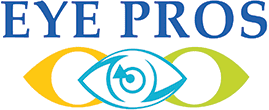10 Signs You Need Glasses
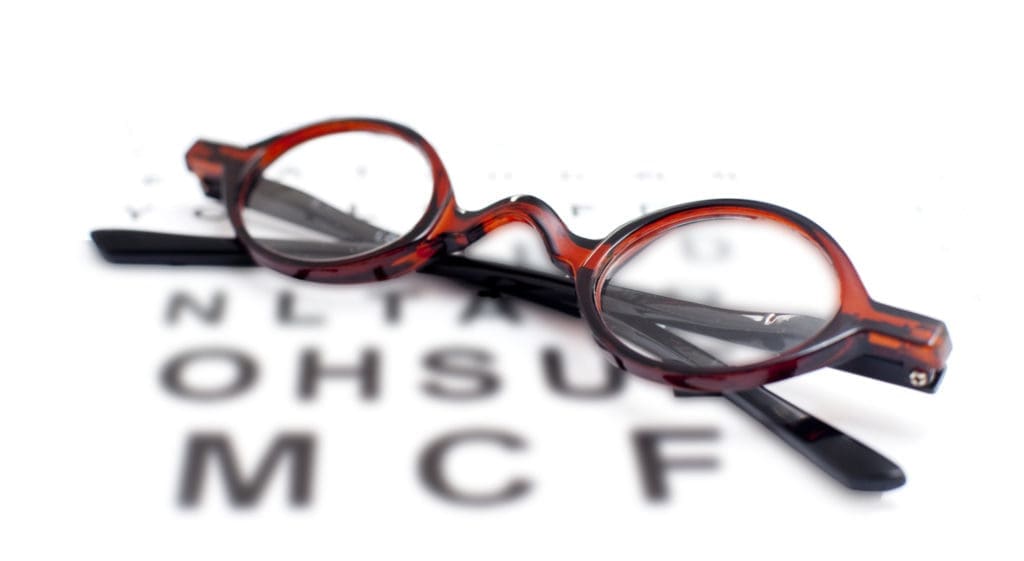
Did you know that upwards of 180 million Americans are visually impaired? One of the most well-known signs of visual impairment is finding it difficult to read. Whether it’s a street sign, magazine, or fine print, having trouble deciphering what something says may mean that you’re having eye troubles. Here are 10 other signs you need glasses. Whether you notice just one or all 10, any of these signs may mean it’s time to schedule an appointment with your eye doctor. 1. Squinting When you squint, you reduce the amount of light that enters your eyes, which decreases the size of whatever you’re focusing on and makes it less blurry. If you find yourself squinting a lot, it could be a sign of visual impairment like nearsightedness or farsightedness. 2. Eye Strain If you have frequent eye strain which occurs as a result of doing regular, everyday activities such as reading, you may want to make an appointment to see your eye doctor. Temporary eye strain has many different causes. Sicknesses like colds or the flu, allergies, or improper sleep can all cause temporary eye strain. But if you notice your eyes are bothering you on the reg, that’s a red flag that there might be a bigger issue at hand. 3. Headaches If you know you’re drinking enough water and getting adequate sleep, you can rule out two other major causes of headaches. Are your eyes still feeling tired or sore even though you’ve gotten a good nights’ sleep? If so, you may be straining your eyes which can contribute to headaches. You may also suffer from headaches if your prescription is too strong. 4. Blurry Vision Minor cases of blurry vision may stem from inadequate sleep or dry or strained eyes. The most common causes of consistent blurry vision, however, are nearsightedness or farsightedness. If you have blurry vision regularly, it’s important to schedule an appointment with your eye doctor. If your vision goes blurry suddenly, call your doctor right away. That’s a sign that there may be an even bigger issue at hand. 5. You Need Bright Light Are you having trouble seeing even when it’s light outside and find yourself turning on an increasing number of lights? If you’re often adjusting the lighting in your home or place of work in order to see better, this may be a sign of farsightedness. It may even be time to get some reading glasses. 6. You Have Difficulty Seeing at Night Do you have trouble seeing at night? Do you only drive during the day because your vision at night is so poor, you’re afraid an accident may occur? If yes is your answer, you could be experiencing symptoms of cataracts. When left untreated, cataracts will continue to reduce your vision – and, if left untreated for an extended period of time – cataracts can cause total blindness. If you think you might be experiencing symptoms of cataracts, it’s wise to get an examination as soon as you can so you can start with treatment early. 7. You Can’t See Your TV Unless You’re up Close to It As a kid, your parents may have yelled at you for sitting too close to the TV because they feared that it could affect your vision. Or, maybe you’ve yelled at your own children because they sit too close to the TV for your comfort. If you find yourself getting closer and closer to the TV because you’re struggling to see what’s going on on screen, that may be a sign of nearsightedness that hasn’t been diagnosed. 8. You Rub Your Eyes…A Lot Do you find yourself rubbing your eyes a lot, even when you know you got a night of good, restful sleep? If your eyes are bothering you on a consistent basis, it may be a sign of eye strain or eye fatigue. You may be able to reduce the strain or fatigue of your eyes by wearing glasses. Schedule an appointment with your eye doctor today and have them give you an eye exam. You may find that a new pair of specs does the trick just fine. 9. You Have Trouble Working at the Computer No…it’s not just that the font on the screen is too small. If you notice that you are having trouble working at the computer for long periods of time, you just might be experiencing symptoms of farsightedness. Before you rush to your doctor’s office, try this: Every 20 minutes, look 20 feet away from you for a total of 20 seconds. Are you still having issues seeing what’s on the screen in front of you? Then it may be time to schedule an eye exam. 10. Eye Pressure Do you have an uncomfortable pressure behind your eyes? If you do, you may be suffering from glaucoma. And believe it or not, glaucoma is more treatable now than ever before. And just because there’s pressure behind your eyes, that doesn’t mean that it’s a guarantee that you have glaucoma. To be safe, though, get your eyes checked out anyway. Notice Any of These Signs You Need Glasses? We covered quite a few different signs you need glasses in this post, but these 10 items are only a few of the possible signs that you may need glasses. If you’ve noticed any of the above signs, it’s a good idea to see an eye doctor and have them check things out. Don’t wait. Schedule your appointment at the first sign of visual impairment so you can correct issues before they get worse. Do you have questions about scheduling an appointment, your prescription, or any issues you may be experiencing? If you do, contact us today, and we’ll work with you to ensure that we answer your questions and address any issues as best we can.
Why Is My Vision Blurry in One Eye? Updated 2024

Do you notice yourself frequently rubbing, squinting, or blinking in an attempt to improve your vision? If you’re experiencing blurry vision in one eye or both, you might attribute it to age or a need for new glasses. However, blurry vision in one or both eyes can also indicate underlying health issues. Prompt treatment of these conditions can often restore clear vision. Sudden blurry vision is not typical, so if it occurs, it’s important to contact your doctor immediately. Before doing so, here’s a brief overview of potential causes of blurry vision: Diabetes and Blurry Vision: Diabetes increases the risk of diabetic retinopathy, which can cause various vision problems, including low-light sight issues and blurry vision. Regular eye check-ups are crucial for early detection and treatment. Stroke and Blurry Vision: Blurry vision, especially if sudden and painless, can be a warning sign of a stroke. Other stroke symptoms include loss of balance, drooping face, weakness or numbness in one arm, dizziness, and slurred speech. Immediate medical attention is necessary if you experience these symptoms. Preeclampsia and Blurry Vision: Blurry vision during pregnancy can be a sign of preeclampsia, a dangerous condition characterized by high blood pressure and protein in the urine. Preeclampsia typically occurs after the 20-week mark and requires medical attention to safeguard both maternal and fetal health. Migraines and Blurry Vision: Migraines may cause blurry vision, sensitivity to light, and other visual disturbances, known as aura. Prompt medical management is essential to control migraine symptoms effectively. Psoriasis and Blurry Vision: Psoriasis can affect the eyes, leading to a condition called uveitis, characterized by inflammation, sensitivity to light, pain, and blurry vision. Treatment options vary depending on the severity of symptoms. Multiple Sclerosis (MS) and Blurry Vision: Blurred vision can be an early sign of multiple sclerosis (MS), resulting from inflammation of the optic nerve (optic neuritis). Other symptoms may include balance issues, fatigue, weakness, and numbness. Early diagnosis and treatment are crucial in managing MS. Brain Tumor and Blurry Vision: A brain tumor can exert pressure on the brain, causing various symptoms, including blurry vision, persistent headaches, nausea, seizures, and personality changes. Medical tests are necessary for diagnosis and treatment planning. Parkinson’s Disease and Blurry Vision: Parkinson’s disease may initially present with other symptoms before causing blurry vision. As the disease progresses, blurry vision may occur due to changes in eye movement and strain on the eyes. Monitoring symptoms and seeking medical advice are essential in managing Parkinson’s disease. Take Care of Your Vision: Your eyes play a vital role in your daily life, and any changes in vision should be taken seriously. Stay vigilant for the symptoms mentioned and consult with your doctor for proper evaluation and management. For more information, visit our website .
10 Ways to Protect Your Vision
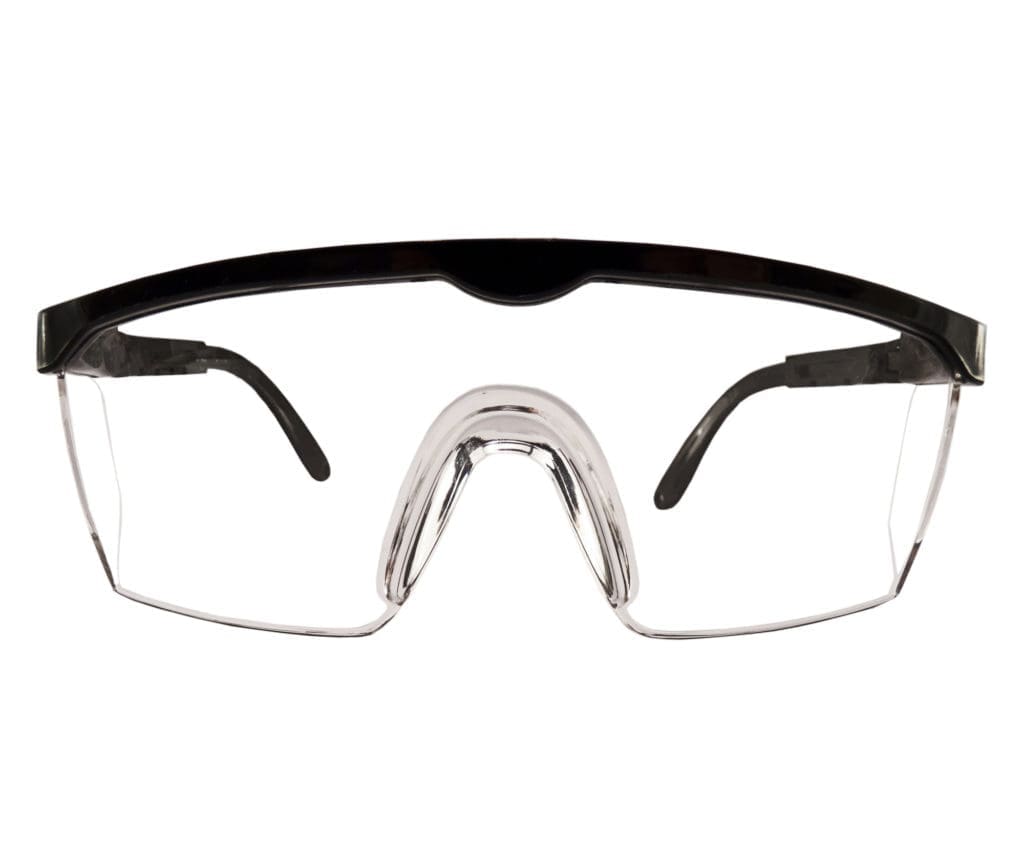
If you think you’re immune to declining vision, think again. It’s estimated that approximately 253 million people have some sort of vision impairment. It’s a fact of life – getting older means more health issues and a greater responsibility to take measures to try and stay healthy. This includes your eyesight. If you’re lucky, your vision will remain strong throughout your twenties and thirties. After that, the chances of vision problems increase. However, it’s never too late to develop good habits that help you protect your vision. And these techniques are probably a lot easier than you thought. Let’s go over ten things you can do to help keep your eyes in good shape. 1. Regular Eye Exams Just because your vision seems unchanged, you shouldn’t neglect regular checkups with your eye doctor. There’s a good chance your vision has deteriorated without you knowing. Going without glasses when you need them puts strain on your eyes and can worsen your eyesight over time. You need to have yearly eye tests done so you know if glasses or contact lenses are necessary. Having regular eye exams also ensures you catch any other conditions early on and treat them before further damage occurs. 2. Don’t Forget Your Shades Ultraviolet rays from the sun can potentially cause a number of eye problems including macular degeneration and cataracts. To protect your vision, you should always wear sunglass when outside. When picking out a pair of shades, it’s important to pay attention to the percentage of UVA and UVB blockage they provide. Look for glasses that block 99 to 100%. Obviously, wearing sunglasses when hanging out by the pool or going to the beach is important. But you should also wear them on partly cloudy days too. 3. Your Diet Matters Antioxidants are very important in maintaining eye health. You can help protect your vision from deterioration by regularly eating fruits and vegetables. Specifically, you should incorporate kale, spinach, and other leafy greens. These vegetables help prevent cataracts. Fruits such as berries, pecans, and artichokes are all high in antioxidants. You should also look for vitamins and supplements that help get rid of toxins. Omega-3 fatty acids have also proven beneficial for vision health. You can get this from salmon, tuna, eggs, and flaxseed. Visit a health food store and ask about other vitamin-rich ingredients that help detoxify your system. 4. Be Aware of Warning Signs If you truly want to protect your vision, you should always remain aware of possible issues and their warning signs. Many people ignore vision deterioration, which only makes it worsen over time. If you notice you’re straining (even slightly) while reading or driving, you need to see your eye doctor. You should also pay attention to things like double vision, trouble seeing in lower light, or blurriness. These could all indicate a need for glasses or contacts. You can also keep your eyes healthy by seeing a doctor if you have redness and irritation, pain, or see spots. You may have a more severe condition that needs treatment. 5. Give up Smoking That’s right! Smoking is even bad for your eyesight. Smoking increases your chances of developing age-related macular degeneration and cataracts. It also contributes to dry eye. If you smoke now and want to protect your vision from future impairment, give it up. Your entire body will thank you. 6. Watch Your Weight In addition to eating the right things, you should also keep an eye on your overall weight. Fortunately, the foods that help keep your eyes in good shape are also good for you. Obesity is often connected to issues like high blood pressure and diabetes. Both of these conditions have the potential to cause vision degeneration. When you’re overweight, there’s more strain on your blood vessels. This, in turn, causes inflammation throughout the body. This added pressure on your blood vessels is potentially damaging to your eyes, so maintain a healthy weight to reduce this stress. 7. Wear Eye Protection You should always wear eye protection when necessary. And we don’t mean prescription glasses or sunglasses. If you play contact or racquet sports, you should always wear sports goggles or a protective mask so you don’t suffer a serious eye injury. If you work around hazardous materials or in environments with lots of dust and debris in the air, wear the proper eye protection. An eye injury could result in permanent damage, so always take precautions. 8. Give the Computer Screen a Break Working on a computer is commonplace now. Unfortunately, it comes with several risks to your eye health. Staring at a monitor all day can cause eyestrain, focus issues, blurriness, and dry eyes. You may also get headaches and neck pain. To help with this, get up and give your eyes a break throughout the day. You’ll probably notice they feel better right away. You should also ask your eye doctor about lenses made specifically for monitor use. 9. Don’t Rub Your Eyes Most people rub their eyes without thinking about it. They don’t even know they’re doing it. Our hands are covered in bacteria, so when you rub your eyes, your transferring potentially harmful germs. Rubbing your eyes can also cause other damage, like scratches to your retina. Try to break yourself of the habit and help protect your vision. 10. Avoid Sleeping With Contacts In If you already wear contact lenses, it’s important you take them out every night before bed. The surface of your contacts may have micro-organisms on them and need to be washed. When you leave them in all night, you increase the chance of these organisms adhering to your eye and causing an infection. Taking your contacts out is also good for your eyes, as it allows them to get more oxygen. Protect Your Vision for Years to Come For some people, vision problems are inevitable. However, by using the tips discussed above, you can preserve the eye health you have now for years. We take
5 Things You Need to Know About Colored Contacts – Updated 2024
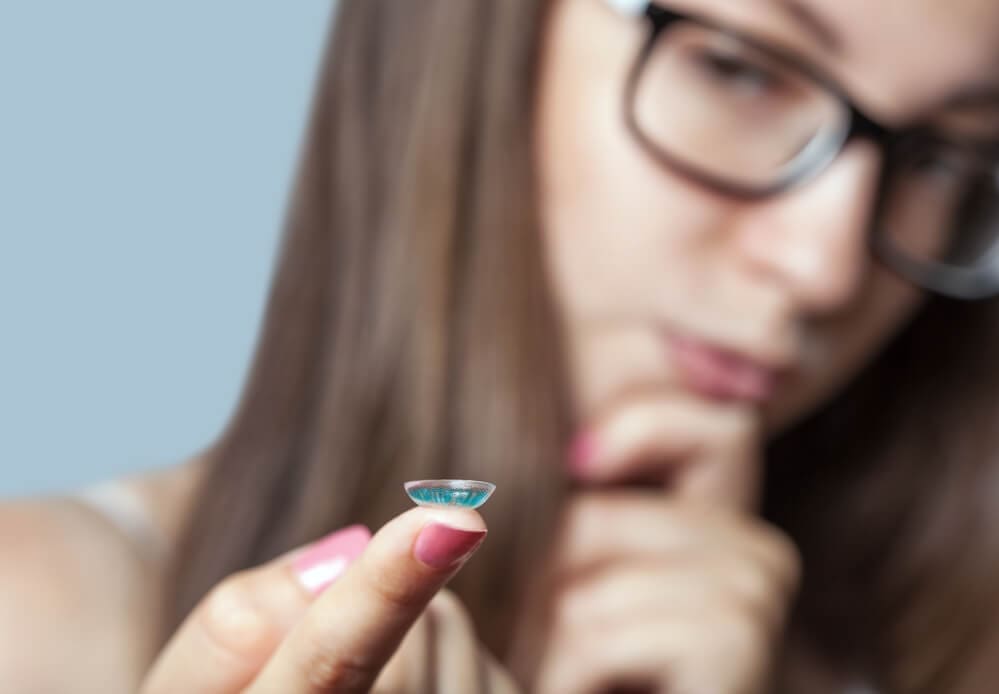
Today there seem to be countless ways to change your look. Whether you love seeking out new fashion trends or like changing your hairstyle every month, there are many ways to express yourself. That doesn’t stop with eye color. In recent years, people have started using colored contacts to create a completely different persona. Many celebrities use them and may even be responsible for the growing popularity. But you don’t have to be famous to change your look with colored lenses. If you’ve been thinking about trying out a new eye color, it’s important to first talk to your eye doctor. You have plenty of options, but you need to educate yourself before making a decision. In this article, we’re going over five important things you should know about colored contacts. 1. Consider the Tint If you’re considering colored contact lenses, it’s important to understand that these are medical devices and not simply for fun. Your vision and comfort come first. When choosing your colored contacts, you need to consider the tint that works best for you. To help you decide, let’s look at the three primary tints available. Opaque Lenses with an opaque tint are non-transparent. They will change the color of your eye completely. These work best for people with naturally dark eyes. Visibility A lens with visibility tent has either a very light green or blue tint applied to it. This tint helps you see the lens while putting them in and also helps spot them if they’re dropped. The color on these is fairly faint. Enhancement Colored lenses with this type of tint help enhance your natural eye color. This translucent tint is a bit darker than visibility tint. If you have lighter eyes and want to boost the color for a more intense look, these are for you. 2. Choosing a Color that Suits You Picking a pair of colored lenses isn’t as easy as simply choosing your favorite color. You may have an idea of what will look best, but they may turn out looking totally wrong. You’ll first want to think about your skin tone and hair color. Take a look at some examples online and get ideas before making a decision. You also need to think about how subtle or drastic a change you want. If you’re only seeking a subtle change, consider going with enhancement lenses. These help deepen the tone of your natural eye color and also add definition around the edges of the iris. Taking this route works best if you have a lighter eye color. If you have a dark eye color and want a subtle change, consider opaque tints with a hazel or blue. You could also go with a lighter version of your natural color. If you want something that pops and gets people’s attention right away, opt for lenses with a bold color. A deep blue or violet works great. 3. They Come in Different Sizes Just like regular contacts, colored lenses come in different sizes. The size you wear is extremely important for both comfort and the health of your eyes. This is why a doctor needs to fit your colored contacts for you. A lens that’s too loose will end up sliding around in your eye and possibly fall out. A tight lens could potentially scratch your eye. Getting the right fit is especially important with colored lenses. If the colored area slides to a different position, it may result in a strange appearance. In addition, your pupil naturally changes size depending on the amount of light you’re exposed to. It’s important to wear contacts that fit perfectly in order to maintain good vision and your desired look. 4. Prescription Color Contact Lenses are Safe You may have heard that colored contacts are unsafe and cause infection or other eye injuries. It’s important to understand that this is a possibility if you buy them without a prescription. However, obtaining them through your eye doctor after an eye exam is totally safe. Remember, these are medical devices. You should treat them just like a regular pair of vision-correcting contact lenses. When getting your lenses, you need to have them fitted by your doctor to ensure they’re comfortable and provide the correct vision enhancement. If you only want colored contacts for special occasions, ask about disposable lenses. Never buy your contacts from a retailer that doesn’t require a prescription. You should also avoid trying to get anime lenses or circle lenses. Your doctor likely won’t prescribe these. Make sure you to follow any care instructions your doctor provides and ask any questions if something’s unclear. These are meant to enhance your eye color and your vision, so treat them like you would any other contacts. 5. Caring for Your Colored Contacts Colored contact lenses need to get cleaned and disinfected regularly. They should also be stored using the correct products and procedures. This helps avoid any type of contamination. You’ll most likely need a multi-purpose, no-rub solution for disinfecting purposes. You’ll also need a case for storing them overnight or when you’re not wearing them. Always wash your hands before cleaning or handling your lenses. Avoid using water to wash them, as tap and even bottled water may contain bacteria. Another important thing to remember is that you’ll need to replace your contacts when necessary. Your eye doctor should be able to tell you when your colored contacts need to be thrown out and replaced with new ones. Aside from following all care instructions just like you would with regular contacts, it’s important you go back for follow-up exams. If you feel any discomfort or think the fit might be off, stop using them and schedule an exam. Change Your Look with Colored Contacts With a little color in your contact lenses, you can give your eyes a makeover. The great thing about colored lenses is you have the freedom to wear them when you want, depending on your mood. Remember, think of
Can You Still Wear Contact Lenses with an Astigmatism?
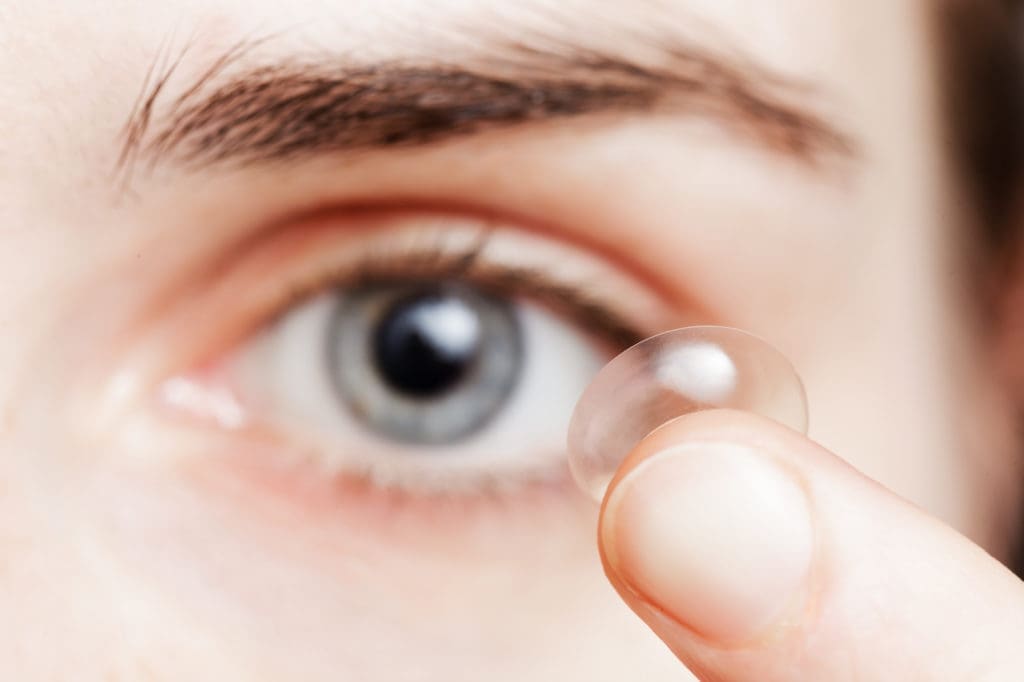
When you’re not wearing your glasses or contacts, do you see blurring, shadowing, or doubling of images? If so, you may have astigmatism. Astigmatism causes blurriness, unlike other vision problems, affecting your sight regardless of how close or far away the object is. This blurriness results from the retina’s inability to focus on light rays properly. If you have astigmatism, chances are you face challenges when finding suitable contact lenses. Those with astigmatism can’t wear traditional soft lenses but need specialized lenses like toric lenses. Toric lenses are specifically designed for patients with astigmatism, allowing for improved focus on objects. They incorporate more than one contact power in a single lens. Soft Toric Lenses Soft toric contact lenses are the most prescribed lenses. They are comfortable, convenient to put in your eye, and just about every contact lens manufacturer carries them. There’s also flexibility with lens prescribing: weekly, bi-weekly, and monthly disposable lenses are available. But there’s more to soft toric lenses than that. For correcting astigmatism, your eye doctor needs to make sure your lens is properly fitted. They do this with laser-made markings. The lenses also have to lie perfectly on your eye to achieve good vision. If you’re having trouble adjusting your lenses, your eye doctor can help you. But don’t be surprised if the lenses feel weird at first. One of the reasons why soft toric lenses are noted for their comfort is because the lens conforms to your eye. It will rotate on its own to perfectly fit on your eye. When you receive your prescription, it will take time for the lens to become adjusted to your eye. Hard Toric Lenses One of the issues with soft toric lenses is their lack of stability. If your astigmatism is severe, the soft lens won’t be able to keep up with the blurriness. It may even result in blurrier vision. If soft toric lenses don’t work for you, consider switching over to hard toric lenses. Hard lenses do just as well correcting astigmatism, but mainly for patients with severe astigmatism. There are two main types of hard lenses: Rigid Gas Permeable Lenses Scleral Lenses Here’s more information on both. Rigid Gas Permeable Lenses Rigid gas permeable lenses, commonly known as RGP or GP lenses, are less prescribed. Only about 9% of contact lens wearers use GP lenses. But, they’re growing in popularity by serving as an alternative to soft toric lenses. RGP lenses are made of a durable plastic that transmits oxygen. Soft lenses contain water; since the RGP lenses aren’t made of water, there’s a decreased risk of eye infection. RGP lenses are easy to clean and last longer than soft lenses. RGP lenses are prescribed to those with severe astigmatism because they retain their shape better. This results in improved vision. But you may think they’re uncomfortable. The term ‘hard contact lens’ sounds extremely uncomfortable. A complaint from older hard lens models was actually their discomfort. But RGP lenses are different. RGP lenses are made for each individual. Your eye doctor will prescribe a lens that matches your cornea shape and the shape of your eye including the curvature, size, and corrective power. RGP lenses are also thinner and smoother than other hard lenses. Scleral Lenses These are specialized RGP lenses that are larger in diameter. The term ‘scleral’ means the lenses completely cover the cornea and extend to the sclera or the outer wall of the eye. Scleral lenses are said to be more comfortable because they cover the entirety of the cornea and sclera. Scleral lenses are also made to protect the thin layer of sclera on your eye, so they’re made delicately. Because of this, they produce less sensation. Scleral lenses are great for astigmatism patients because they rarely dislocate. They’re stable and stay in the center of your eye. They hold in place, allowing for clearer vision. Like normal RGP lenses, scleral lenses are perfect for those with severe astigmatism. Scleral lenses are prescribed when other lens types haven’t worked. Hybrid Toric Contact Lenses These are a combination of hard and soft lenses. The center of these lenses is soft, while the outer rim is hard. Even though RGP lenses boast comfort, patients usually prefer the hybrid lenses over the RGP lenses. But hybrid lenses are very similar to hard lenses. They both correct astigmatism in similar ways. Hybrid lenses also serve as an alternative to soft lenses. The only issue with hybrid lenses is they take longer for your eye doctor to fit. More Information The Issues with Regular Lenses Patients with astigmatism have irregular cornea shapes. This cornea disproportion can result in blurriness from the contact lenses, which is why most astigmatism patients have to be sized for lenses. Since regular soft lenses aren’t as stable as soft, hard or hybrid toric lenses, they often move around the eye. This results in stress to the nerve and ocular muscles. They also don’t deal with refraction problems like toric lenses handle. About Toric Lenses Toric lenses handle refraction problems and aren’t prone to moving like regular lenses. The reason why toric lenses don’t move is that they’re thicker than regular lenses. They are made heavier at the bottom, which is what helps correct vision. What Happens If You Don’t Treat Astigmatism Untreated astigmatism can result in nerve tension, headaches, fatigue, and the habit of squinting eyes. The easiest way to treat astigmatism is prescription contact lenses. Since toric lenses are heavier at the bottom, they help correct astigmatism. Time to Find Contact Lenses for Astigmatism If you have astigmatism, you’re required to find specific types of contact lenses. Toric lenses give the best results since they are stable while providing comfort. There are three types of toric lenses: soft, hard, and hybrid toric lenses. Regardless of your preference, the lens will be sized to fit your needs. If you’re in Idaho and need to schedule an appointment with an eye doctor, contact us.
